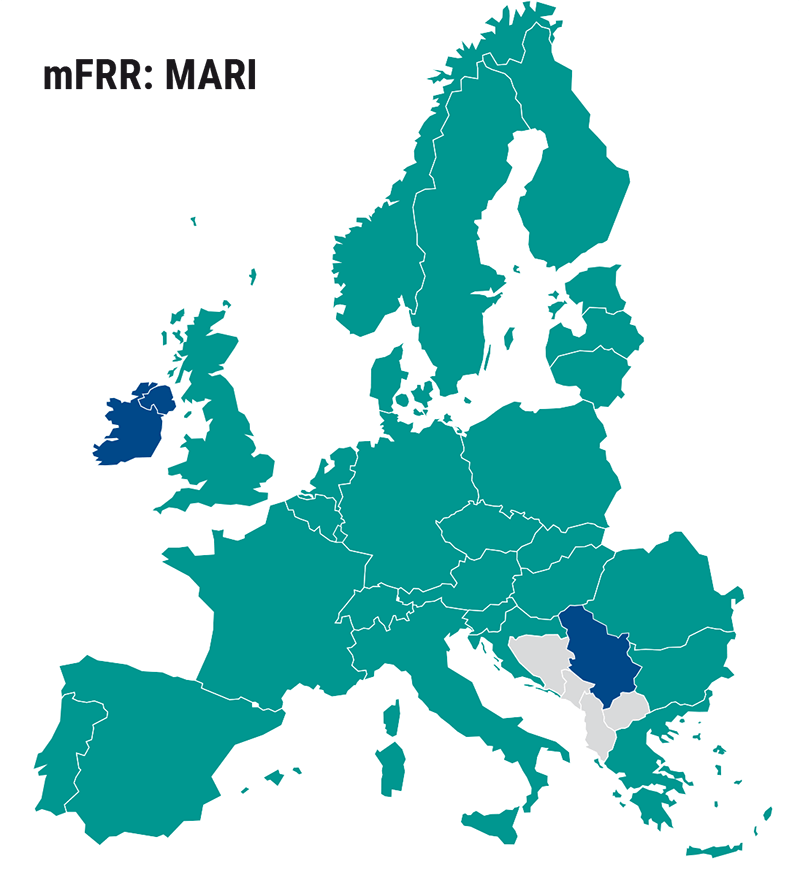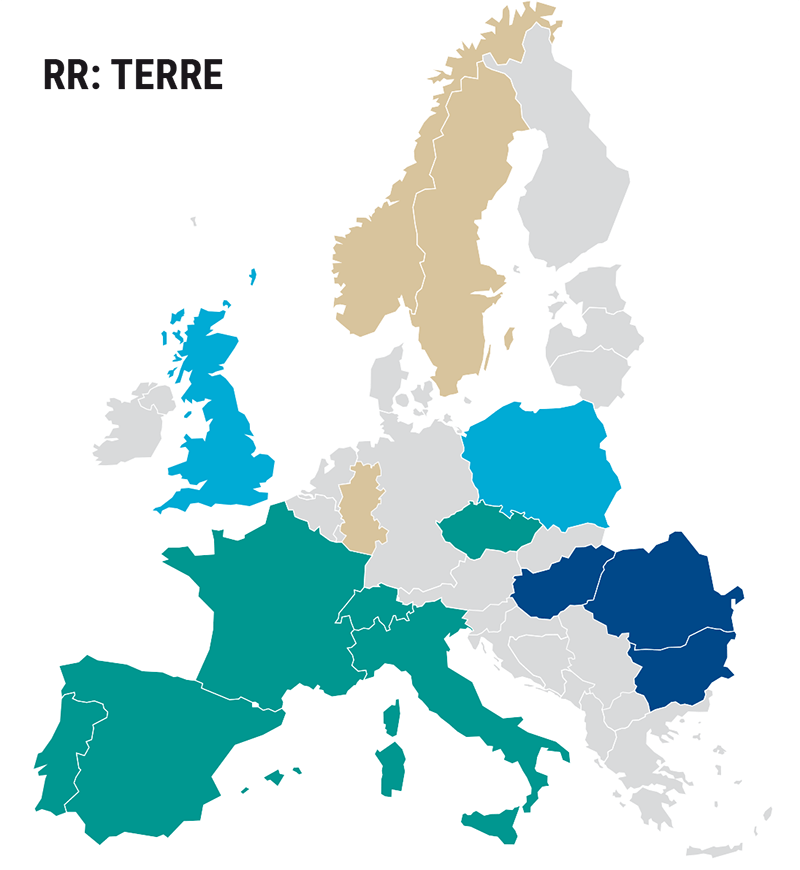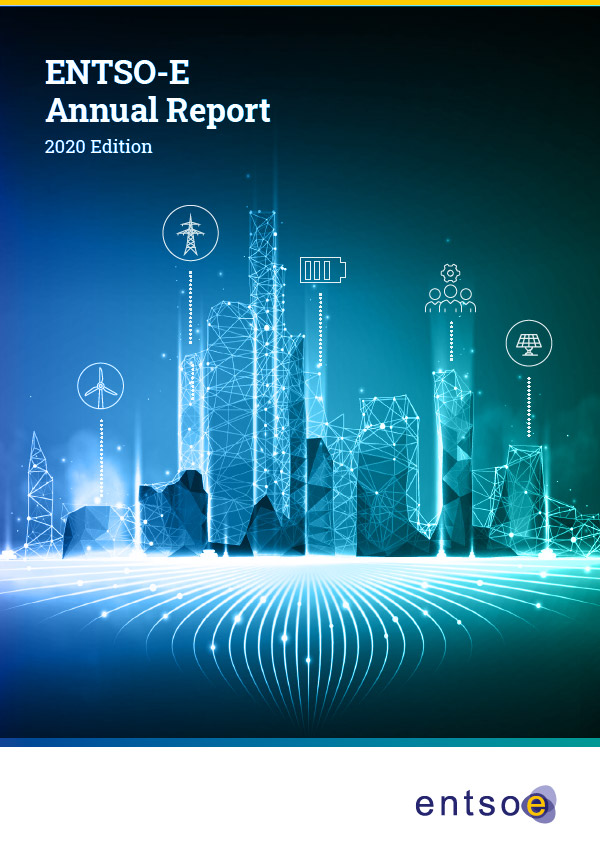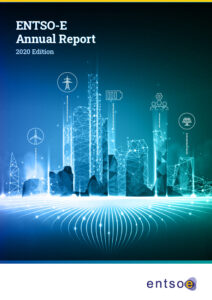2 Market
Single day-ahead and intraday coupling
According to Art. 10 CACM, TSOs cooperate with Nominated Electricity Market Operators (NEMOs) to organise the day-to-day management of the single day-ahead and intraday coupling. ENTSO-E facilitates the discussion. This work helps jointly organise the further development of the market coupling by defining the responsible bodies and classifying the decisions to be taken by each body, as well as helping to define the criteria for prioritising the functionalities to be developed. In this spirit, in January 2020 ACER approved the NEMO’s joint proposal on the Products that can be taken into account in Single Intraday Coupling (SIDC), and also approved in December 2020 the NEMO’s joint proposal on the Products that can be taken into account in Single Day-Ahead Coupling (SDAC). ACER also approved in January 2020 the TSO’s and NEMO’s proposal for the price coupling algorithm and for the continuous trading matching algorithm. Moreover, the market coupling operations of the Greek bidding zone in SDAC were successfully launched on 15 December 2020.
Key dates & documents
30 Jan 2020: ACER approval of the TSO’s and NEMO’s proposal for the price coupling algorithm and for the continuous trading matching algorithm
30 Jan 2020: ACER approval of the NEMO’s joint
proposal on Products that can be taken into account in SIDC (subject to the amendments as set out in Annex I to Decision 05/2020)
22 Dec 2020: ACER approval of the NEMO’s joint proposal on Products that can be taken into account in SDAC (subject to the amendments as set out in Annex I to Decision 37/2020)
Capacity Calculation Regions
In accordance with Art. 15.1 CACM, in November 2020 all TSOs submitted to ACER the common proposal for the determination of CCRs.
Moreover, in 2020 CCRs delivered, in accordance with the CACM Regulation, robust and timely fallback procedures (Art. 44), day-ahead and intraday capacity calculation methodologies (Art. 20.2), methodologies for coordinated redispatching and countertrading (Art. 35.1), and redispatching and countertrading cost sharing methodology (Art. 74.1).
Key dates & documents
19 Aug–19 Sep 2020: Public consultation on the all-TSOs proposal for the determination of CCRs
6 Nov 2020: Submission of the all-TSOs proposal for the determination of CCRs
6 Nov 2020: ENTSO-E’s response to the public consultation of the all-TSOs proposal for the determination of CCRs
| DA and ID CapCalc (Art. 20.2) | RD and CT (Art. 35.1) | Robust and timely fallback procedures (Art. 44) | RD and CT cost sharing (Art. 74.1) |
|
|---|---|---|---|---|
| Italy North | DA and ID submitted 24 Jul 2020 | Already approved | Submission 1st amendment 30 Sep 2020* Public consultation 24 Jul – 24 Aug 2020 | Already approved |
| Greece/Italy | Public consultation 26 May – 27 Jun 2020 | Already approved | Submission 1st amendment 3 Dec 2020 Public consultation 24 Jul – 24 Aug 2020 | Already approved |
| Core | Submission 1st amendment 16 Nov 2020 Public consultation 25 Jun – 31 Jul 2020 | ACER approval 4 Dec 2020 (subject to the amendments as set out in Annex I to Decision 35/2020) | NRAs of the Core CCR requested ACER Decision 4 Dec 2020** Public consultation 24 Jul – 24 Aug 2020 | ACER approval 30 Nov 2020 (subject to the amendments as set out in Annex I to Decision 30/2020) |
| SWE | Already approved | Already approved | Submission 2nd amendment 29 Sep 2020 Public consultation 24 Jul – 24 Aug 2020 | Already approved |
| SEE | Already approved | Already approved | Submission 1st amendment 1 Sep 2020 Public consultation 28 Jul – 28 Aug 2020 | ACER approval 30 Nov 2020 (subject to the amendments as set out in Annex I to Decision 31/2020) |
| Hansa | Request for amendment 4 Sep 2020 Public consultation 3 Dec 2020 – 10 Jan 2021 | Submission 2nd amendment 03 Dec 2020 Public consultation 3 Dec 2020 – 10 Jan 2021 | Already approved | Submission 2nd amendment 29 Dec 2020 |
| Nordic | Submission 2nd amendment 14 Oct 2020 Public consultation 15 Jan – 17 Feb 2020 | Already approved | Already approved | Already approved |
| Channel | Already approved | Already approved | Public consultation 24 Jul – 24 Aug 2020 | Already approved |
* Relevant NRAs approved the amendment in March 2021. These developments are out of the scope of this Report and will be covered in the Annual Report 2021, to be drafted next year.)
** ACER approved the Proposal in March 2021 subject to the amendments set out in Annex I to Decision 02/2021. These developments are out of the scope of this Report and will be covered in the Annual Report 2021, to be drafted next year.
Table 2 – CACM Capacity Calculation methodologies in 2020
Implementation monitoring
The CACM Cost Report 2019 submitted to all NRAs in July 2020 in accordance with Art. 80(1) of the CACM Regulation includes the costs of the coordinated activities of all NEMOs and/or all TSOs, and the costs incurred for activities performed by NEMOs or by TSOs and NEMOs in a certain region, in relation to single day-ahead and intraday market coupling. In June 2020, ENTSO-E issued the 6th edition of the annual report on the progress and potential problems with the implementation of FCA, single day-ahead coupling and single intraday coupling (a “Market Report”) in pursuance of Art. 82(2)(a) CACM and Art. 63(1)(a) FCA.
In 2020, ENTSO-E has also enhanced the Transparency Platform for ACER data provision purposes in accordance with Art. 82.4 CACM and 63.3 FCA.
Key dates & documents
30 Jul 2020: Submission to all NRAs of the CACM Cost Report 2019
29 Jun 2020: Submission to ACER of the ENTSO-E Market Report
The Forward Capacity Allocation Regulation
The FCA Regulation, which entered into force on 17 October 2016, sets out rules regarding the type of long-term transmission rights (LTTRs) that can be allocated via explicit auction, and the means by which holders of transmission rights are compensated in the event their right is curtailed.
The overarching goal is to promote the development of liquid and competitive forward markets in a coordinated manner across Europe and provide market participants with the ability to hedge their risk associated with cross-border electricity trading.
FCA Methodologies
Regarding the implementation tasks at the regional level, some CCRs delivered common capacity calculation methodologies for long-term time frames (Art. 10.1 FCA), methodologies for splitting long-term cross-zonal capacity (Art. 16.1 FCA) and the regional design of LTTRs (Art. 31.3 FCA).
| LT timeframes (Art. 10.1) | Splitting LT cross-zonal capacity (Art. 16.1) | |
|---|---|---|
| Hansa | Amendment submitted 3 Oct 2020 | Approved 4 May 2020 |
| Core | Submitted 30 Nov 2020 Public consultation 16 Sep – 16 Oct 2020 | Approved 14 Jul 2020 |
| SWE | Approved 28 Feb 2020 | Approved 28 Feb 2020 |
| Baltic | Request for amendment 17 Nov 2020 | |
| Channel | Request for amendment 29 Jul 2020 Public consultation 13 Dec 2019 – 13 Jan 2020 | Request for amendment 29 Jul 2020 |
| Greece/Italy | Approved 27 Jan 2020 | Approved 27 Jan 2020 |
| Italy North | Approved 15 Dec 2020 Public consultation 10 Feb – 13 Mar 2020 | Approved 15 Dec 2020 Public consultation 10 Feb – 13 Mar 2020 |
| SEE | Amendment submitted 1 Sep 2020 | Approved 2 Dec 2020 (subject to the amendments as set out in Annex I to Decision 32/2020) |
Table 3 – FCA Capacity Calculation Methodologies in 2020
In accordance with Art. 31.3 of the FCA Regulation, in June 2020 the relevant NRAs approved the third amendment to the Core TSOs’ regional design of LTTRs that introduces the switch from physical transmission rights with the use-it-or-sell-it principle to financial transmission rights on specific bidding zone borders. Moreover, this third amendment does not change the impact of the previously approved amendment on the objectives of the FCA Regulation.
Key dates & documents
9 Jun 2020: Approval of the 3rd amendment to the Core TSOs’ regional design of LTTRs
18 Dec 2019 –28 Jan 2020: Public consultation on the 3rd amendment to the Core TSOs’ regional design of LTTRs
Finally, ENTSO-E has coordinated the preparation of the All TSOs’ proposal for the methodology for sharing costs incurred to ensure firmness and remuneration of long- term transmission rights pursuant to Art. 61 (FCA). The methodology was approved by ACER in October 2020.
Key dates & documents
23 Oct 2020: Approval of the all TSOs’ proposal for the methodology for sharing costs incurred to ensure firmness and remuneration of LTTRs
The Electricity Balancing Regulation
Efficient balancing markets, in which all resources are empowered to participate on a level playing field, shall ensure security of supply at the lowest cost and can deliver environmental benefits by reducing the need for back-up generation. The Electricity Balancing Regulation (EB Reg.) sets a framework for common European rules and European platforms for cross-border balancing markets. The balancing processes are organised in the following steps:
- Frequency containment reserves (FCR)1, which stabilise the frequency after a disturbance at a steady-state value by a joint action of FCR within the whole synchronous area;
- Frequency restoration reserves with automatic activation (aFRR) and frequency restoration reserves with manual activation (mFRR): these are activated to control the frequency toward its set point value and replace FCR;
- Replacement reserves (RR), which replace and/or complement FRR via the activation of RR;
- Imbalance netting (IN), which reduces the amount of simultaneous and counteracting aFRR activations via imbalance netting power interchange.
1 The Guideline includes FCR in the balancing process but does not provide for an associated common platform.
Ongoing or planned implementation activities include the development of several methodologies by all TSOs, with ENTSO-E acting as facilitator, as well as the implementation of the European balancing platforms.
The European balancing platforms
The European platform for replacement reserves – Trans-European Replacement Reserves Exchange (TERRE) – was made operational in January 2020 and five2 TSOs became Members throughout the same year (Art. 19.5 EB Reg.).
The European platform for imbalance netting – International Grid Control Cooperation (IGCC): in 2020, there were nineteen3 operational members that continued the implementation of the platform (Art. 22.5 EB Reg.); among these, six4 member TSOs became operational throughout 2020. In June 2020, ACER adopted the implementation framework of the European platform for the imbalance netting process (Art. 22.1 EB Reg.).
European platform for the exchange of mFRR and aFRR energy – Manually Activated Reserves Initiative (MARI) and Platform for the International Coordination of Automated Frequency Restoration and Stable System Operation (PICASSO): In accordance with the submission by all TSOs of the methodology proposals for implementation frameworks, pricing and activation purposes of balancing energy bids and TSO–TSO settlement of exchanges of balancing energy and the IN process, the implementation of the platforms continued throughout 2020 (Art. 20.6 and 21.6 EB Reg.). In January 2020, ACER adopted the implementation framework of the European platform for the exchange of mFRR (Art. 20.1 EB Reg.)5 and of the European platform for the exchange of aFRR (Art. 21.1 EB Reg.)6. Moreover, in August 2020, all TSOs designated their proposed balancing entities entrusted with operating the MARI and PICASSO platforms (Art. 20.4 and 21.4 EB Reg.).
Key dates & documents
24 Jan 2020: ACER Decisions on the implementation frameworks of the European platform for the exchange of mFRR and on the European platform for the exchange of aFRR
13 Jul 2020: Public Workshop on the MARI implementation
18 Dec 2020: Public Workshop on the MARI implementation
2 ČEPS (Czech Republic), REE (Spain), REN (Portugal), RTE (France), and Swissgrid (Switzerland).
3 50Hertz (Germany), Amprion (Germany), APG (Austria), ČEPS (Czech Republic), HOPS (Croatia), Elia (Belgium), Energinet (Denmark), ELES (Slovenia), MAVIR (Hungary), PSE (Poland), REE (Spain), REN (Portugal), RTE (France), SEPS (Slovak Republic), Swissgrid (Switzerland), TenneT NL (the Netherlands), TransnetBW (Germany), TenneT DE (Germany) and Terna (Italy).
Figure 3 – Balancing Implementation Projects Status. It is worth clarifying that this figure represents the status of projects as of today.
CCR Methodologies
Regarding the implementation tasks at the regional level, some CCRs delivered on a voluntary basis methodologies for market-based cross-zonal capacity (CZC) allocation (Art. 41.1 EB Reg.) and for the allocation of CZC based on an economic efficiency analysis (Art. 42.1 EB Reg.).
| CZC for the exchange of balancing capacity or sharing of reserves (Art. 41.1) | Allocation of CZC based on an economic efficiency analysis (Art. 42.1) | |
|---|---|---|
| Hansa | 1st amended proposal submitted 13 Oct 2020 (Hansa TSOs have withdrawn the proposal pursuant to Article 41(1) of EB Regulation from the regulatory approval process on 12 May 2021. These developments are outside the scope of this Report and will be covered in the Annual Report 2021, to be drafted next year.) | |
| Core | 1st amended proposal submitted 4 Dec 2020 | 1st amended proposal submitted 4 Dec 2020 (Core TSOs have withdrawn the proposal pursuant to Article 42(1) of EB Regulation from the regulatory approval process on 12 May 2021. These developments are outside the scope of this Report and will be covered in the Annual Report 2021, to be drafted next year.) |
| Baltic | 2nd amended proposal submitted 30 Oct 2020 | |
| Greece/Italy | 2nd request for amendment 2 Dec 2020 (2nd amended proposal submitted 1 Apr 2021. These developments are outside the scope of this Report and will be covered in the Annual Report 2021, to be drafted next year.) | 2nd request for amendment 2 Dec 2020 (2nd amended proposal submitted 9 Apr 2021. These developments are outside the scope of this Report and will be covered in the Annual Report 2021, to be drafted next year.) |
| Italy North | 2nd request for amendment 15 Dec 2020 (2nd amended proposal submitted 26 Mar 2021. These developments are outside the scope of this Report and will be covered in the Annual Report 2021, to be drafted next year.) | 2nd request for amendment 15 Dec 2020 (2nd amended proposal submitted 26 Mar 2021. These developments are outside the scope of this Report and will be covered in the Annual Report 2021, to be drafted next year.) |
| Nordic | ACER approval 5 Aug 2020 (ACER approved the Proposal subject to the amendments set out in Annex I to Decision 22/2020.) | |
Table 4 – EB GL Capacity Calculation Methodologies in 2020
Further EB Reg. deliverables in 2020
| Further EB Reg. deliverables in 2020 | Key documents and dates | |
|---|---|---|
| Art. 25.2: | Proposal for a list of standard products for balancing capacity for frequency restoration reserves and replacement reserves | 17 Jun 2020: ACER approval (ACER approved the Proposal subject to the amendments set out in Annex I to Decision 11/2020.) |
| Art. 29.3: | Proposal for a methodology for classifying the activation purposes of balancing energy bids | 15 Jul 2020: ACER approval (ACER approved the Proposal subject to the amendments set out in Annex I to Decision 16/2020.) |
| Art. 30.1: | Proposal for pricing of balancing energy and CZC used for the exchange of balancing energy (RR, FRR, IN) | 24 Jan 2020: ACER approval (ACER approved the Proposal subject to the amendments set out in Annex I to Decision 01/2020.) |
| Art. 40.1: | All TSOs’ Proposal for a methodology for a co-optimised allocation process of CZC for the exchange of balancing capacity or sharing of reserves | 17 Jun 2020: ACER approval (ACER approved the Proposal subject to the amendments set out in Annex I to Decision 12/2020.) |
| Art. 50.1: | Proposal for TSO–TSO settlement of intended exchanges of energy as a result of the RR, mFRR, aFRR and/or RR processes | 15 Jul 2020: ACER approval (ACER approved the Proposal subject to the amendments set out in Annex I to Decision 17/2020.) |
| Art. 52.2: | Proposal for imbalance settlement harmonisation | 15 Jul 2020: ACER approval (ACER approved the Proposal subject to the amendments set out in Annex I to Decision 18/2020.) |
Table 5 – Further EB Reg. deliverables in 2020
Implementation monitoring
In accordance with Art. 63.2 EB Reg., ENTSO-E submitted to ACER the Balancing Report 2020. This publication focuses on the technical aspects of the implementation at the European, regional and national levels of the Electricity Balancing Regulation and is the first of its kind. It summarises the developments that have occurred since the EB regulation entered into force (i. e. 18 December 2017) until 18 December 2019.
Key dates & documents
29 June 2020: Submission to ACER of the Balancing Report 2020
Transparency of capacity calculation by TSOs
The CEP introduces a new regulatory framework for cross-zonal capacity calculation. Specifically, Article 16.8 of the EU Electricity Regulation demands that at least 70 % of the interconnection capacity shall be made available for cross-zonal electricity trading (respecting operational security limits of internal and cross-zonal critical network elements and considering contingencies). The remaining 30 % of the total capacity of each critical network element can be used for the reliability margins, loop flows and internal flows.
In response to the “ACER Report on the Result of Monitoring the Margin Available for Cross-Zonal Electricity Trade in the EU in the First Semester of 2020”, ENTSO-E published in December 2020 its technical comments highlighting a series of aspects related to the implementation of the 70 % rule.
Key dates & documents
22 December 2020: Publication of ENTSO-E’s technical comments on ACER’s “Report on the Result of Monitoring the Margin Available for Cross-Zonal Electricity Trade in the EU in the First Semester of 2020”
Bidding zone review
In accordance with Art. 14.5 of the EU Electricity Regulation (2019/943), all TSOs submitted in February 2020 an updated proposal7 for the methodology and assumptions to be used in the bidding zone review process and for the alternative bidding zone configurations to be considered. The updated proposal contains the same alternative bidding zone configurations as initially submitted, with the exception of the Nordic bidding zone review region, which is proposing an additional alternative configuration.
Following the all-NRAs’ request for decision of July 2020, ACER approved the proposal in November 2020.
7 The initial proposal was submitted in October 2019, and all NRAs requested its re-submission in December 2019.
Capacity Mechanisms
As required by Art. 26.11 of the Electricity Regulation, ENTSO-E submitted to ACER in July 2020 technical specifications for cross-border participation in capacity mechanisms. ACER approved these in December 2020.
Use of Congestion Income
In accordance with art. 19.4 of the Electricity Regulation, ACER approved in December 2020 the methodology for the use of congestion income.
Key dates & documents
22 Dec 2020: ACER approval of the technical specifications for cross-border participation in capacity mechanisms.
31 Jan –13 Mar 2020: Public consultation on the technical specifications for cross-border participation in capacity mechanisms.
23 Dec 2020: ACER approval of the methodology for the use of congestion income
20 Mar –1 May 2020: Public consultation on the methodology on the use of congestion income
Inter Transmission System Operator Compensation
The Inter Transmission System Operator Compensation (ITC) Agreement is a multiparty agreement concluded between ENTSO-E, on the one hand, and ENTSO-E members and TSOs that comply with the Union law in the field of electricity or with the previous agreement on ITC, also referred to in this context as “ITC Parties” on the other. It offers a single framework wherein European TSOs compensate each other for costs associated with hosting transit flows (i. e. facilitating the transfer of electricity between two countries). This mechanism aims to incentivise the hosting of cross-border flows and thereby facilitate an effectively competitive pan-European electricity market.
The ITC mechanism is governed by Art. 49 of Reg. (EU) 943/2019. The ITC mechanism is further specified by Reg. (EU) 838/2010 on laying down guidelines relating to the inter-transmission system operator compensation mechanism and a common regulatory approach to transmission charging.
The ITC Agreement provides for an annual process in which the parties are required to provide and check the values for the calculation of the annual perimeter fee. Based on the preliminary data, the transit flows, also including the perimeter flows, are calculated (i. e. imports and exports of electricity to and from third countries).
According to Reg. (EU) 838/2010, ENTSO-E is mandated to determine the amount of losses incurred on national transmission systems by calculating the difference between: (1) the amount of losses actually incurred on the transmission system during the relevant period; and (2) the estimated amount of losses on the transmission system which would have been incurred on the system during the relevant period if no transit of electricity had occurred. In October 2020, ENTSO-E published the ITC Transit Losses Data Report 2019.
ACER publishes an annual monitoring report on ITC. To this end, ENTSO-E provides ACER with information on both quantitative data (preliminary and final data) and descriptive information (e. g. explanations for capacities not allocated according to Guidelines).
Key dates & documents
2 Oct 2020: Publication of the “ITC Transit Losses Data Report 2019”
TSOs are instrumental in the progressive harmonisation of electricity market rules, which leads to a vast increase of electricity exchanges across countries, stimulates competition and increases liquidity in wholesale markets. This delivers benefits to society and enables the entry of an increasing number of market participants, including producers of renewable energy, thus contributing to a more sustainable energy system.
Download
ENTSO-E Annual Report 2020
This Annual Report covers the period from January to December 2020. It focuses on the legal mandates given to ENTSO-E. The activities covered in this report were performed thanks to the 42 members of ENTSO-E who provide its financial resources and whose staff provides expertise to the Association.
Chapters:
- System Operation
- Market
- System Development
- Transparency Regulation
- Research, Development and Innovation
- Cybersecurity, Interoperability and Data
- TSO–DSO partnership and demand side flexibility











